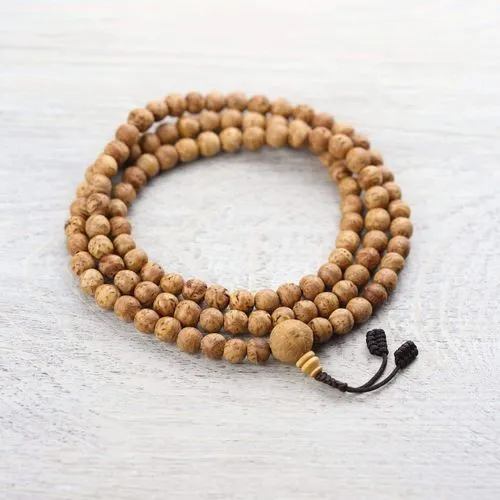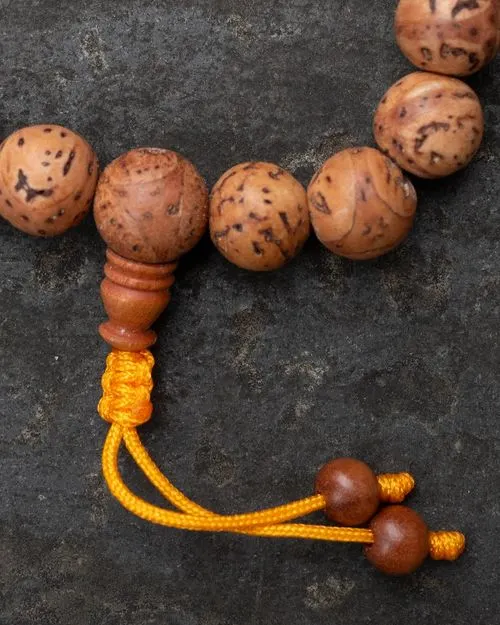If you’ve ever held a Bodhi seed mala, you’ve likely felt its grounding energy and deep spiritual resonance. But have you ever wondered where these sacred seeds actually come from?
Despite their name, not all Bodhi seeds come from the actual Bodhi tree (Ficus religiosa) — the legendary tree under which the Buddha attained enlightenment. In fact, “Bodhi seed” is a term that refers to several types of seeds used in spiritual malas, all carrying the essence of awakening, mindfulness, and devotion.
In this post, we’ll explore the origins of Bodhi seeds, the plants they come from, and how they’ve become cherished across spiritual traditions.
1. The Original Bodhi Tree (Ficus religiosa)
Let’s begin with the true Bodhi tree — a type of fig tree native to India, Nepal, and Sri Lanka. Known as the “Tree of Awakening”, this is the very species under which Siddhartha Gautama meditated and attained enlightenment over 2,500 years ago.
Do malas come from this tree?
Not typically. The seeds from Ficus religiosa are small and not well-suited for stringing. While leaves and bark from this sacred tree may be used in religious offerings, malas labeled as “Bodhi seed” usually come from other species.
2. Phoenix Eye Bodhi Seeds (Ziziphus or Wild Date Trees)
One of the most popular types of Bodhi seed malas comes from the Ziziphus family — often called “Phoenix Eye Bodhi” due to the eye-shaped markings on each bead.
These seeds are commonly sourced from Tibet, Nepal, and parts of India. The trees produce hard, round seeds that are ideal for malas and naturally feature the symbolic “eye” that represents spiritual awakening and insight.

3. Lotus Root and Moon & Star Bodhi Seeds
Despite their poetic names, these beads do not come from the lotus plant or the moon. These seeds often come from species of wild date trees, palms, or other flowering shrubs found in China, Nepal, and Southeast Asia.
-
Lotus Root Bodhi Seeds: Known for their smooth, cream-colored surface, these are popular for their elegant look.
-
Moon & Star Bodhi Seeds: Named for the dotted star and crescent patterns on each bead, they are prized for their unique visual appeal.
4. Chinese and Himalayan Sources
Many Bodhi seed malas, especially those used in Tibetan Buddhism, are sourced from highland regions in Tibet, Nepal, and Bhutan, where mala-making is a deeply rooted tradition. China is also a major source, especially for intricately carved or polished Bodhi beads, often used in more decorative or symbolic malas.
Why It Matters
Understanding where your Bodhi seeds come from adds meaning to your practice. Whether your mala is crafted from Tibetan Phoenix Eye seeds or Himalayan Moon & Star seeds, each bead carries a story — of land, tradition, and the human intention to seek awakening.
Closing Thoughts
Bodhi seeds may come from different trees and regions, but they all share one purpose: to support your spiritual journey. Each time you turn a bead in your hand, you’re connecting not just with your breath or mantra, but with a centuries-old lineage of seekers who’ve walked the path before you.


